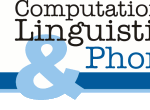Information structure and its interaction with discourse semantics
(RANLP tutorial)
Ivana
Kruijff-Korbayová
Abstract
Information Structure (IS) concerns how speakers/writers realize content within a sentence in a way that reflects their intentions and their formulation of the hearer/reader's attentional state. By means of a particular IS, a speaker/writer presents some parts of the sentence meaning as context-dependent, and others as context-affecting.
The goals of the course are:
- to introduce the notion of information structure and its interpretation;
- to introduce various approaches to IS, and explain the diverging terminologies that are used by them;
- to explain how IS is realized by (an interplay of) various means including intonation, word order, syntactic constructions and morphological marking;
- to consider how utterance-level IS depends on the discourse context and influences interpretation at the discourse level.
Various approaches to IS exist, which use diverging terminologies. Among the most often distinguished notions in the area of IS (at various levels) are Theme-Rheme (Mathesius, Firbas, Danes, Halliday, Bolinger, Steedman), Topic-Comment (Chomsky, Jackendoff), Topic-Focus (Sgall and Hajicova, Buering), Ground(=Link+Tail)-Focus (Vallduvi), Presupposition-Focus (Chomsky, Jackendoff, Karttunen&Peters, Creswell, Selkirk, Rooth), Backround-Focus (von Stechow, Krifka, Steedman), Given-New (Halliday), contextually bound-nonbound (Sgall and Hajicova). We will briefly introduce these approaches and compare the different terminologies by showing how they evolved from a common source (Mathesius) and interacted with other areas of (formal) syntax, semantics and pragmatics.
IS can be realized by various means, and often by an interplay thereof. This includes intonation (i.e., accenting, de-accenting, and phrasing), word order, syntactic constructions and morphological marking. Languages differ in the extent to which they employ these means. We will explain how IS is realized by various means in various languages (English and Czech as two very different cases will be of central interest, but other languages will be included too).
Since IS reflects attentional state(s) of discourse participants and attention transcends the sentence, it is appropriate to ask also whether, and if so how, IS projects beyond the sentence into discourse. We will discuss two aspects of the interaction between sentence-level IS and discourse context: (i) dependence and influence of IS on the cognitive status of discourse referents (e.g., activation/accessibility/inactivation, cf. Chafe); (ii) IS-sensitive interpretation of particular adverbials and discourse connectives, requiring access to suitable alternatives in the context (e.g., `only', `even', `too', `although/however', `otherwise').
The concern with IS and its interplay with the larger discourse context is not only justified on theoretical grounds: Experience with applications such as translating telephony and interactive query-answering makes it painfully clear that a theory relating IS and discourse semantics is essential for accurate Natural Language Processing. Fortunately, formal accounts addressing these issues have started to emerge and some, to be embodied in computational models of discourse processing. This tutorial aims at providing enough theoretical background to understand and appreciate such approaches.
Literature
Unfortunately, there is no suitable (set of) coursebook(s) in which the issues addressed in the tutorial would be comprehensively handled. Knud Lambrecht's Information Structure and Sentence Form (1994, Cambridge University Press) discusses in detail a number of concepts involved in information structuring, and thus provides useful linguistic background. In addition, a set of relevant papers for further reading will be suggested during the tutorial.
Prerequisites:
None, though awareness of basic syntactic, semantic and pragmatic notions would be an asset.
Last modified: Fri Oct 5 15:01:37 MET DST 2001 by Ivana Kruijff-Korbayová

